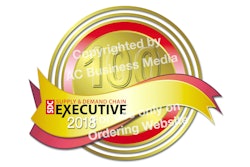
Editors Note: The following article is brought to you by IHS Markit in partnership with the Supply Chain Network.
Q: What are the five major challenges of engineering leaders?
Over the course of the year, I meet with many engineering leaders around the world, across multiple industries, and I keep hearing the same five things over and over again.
First, revenue. How do I hit my revenue plan? How do I get my projects done on time to ensure that my company is able to hit our revenue plans?
Second, organizational capabilities. With many folks retiring, how do I replace them? How do I get the new workforce trained and up to speed? How do I make sure we’re not forgetting the best practices and knowledge we’ve learned over the years and ensure they’re being reused? And how do I bring new employees up to speed most effectively?
Third, innovation. How do I stay ahead of my competition? How do I get the right products into the market at the right time? How do I get closer to my customers to truly understand their requirements and what they need? Technology is changing rapidly. How do I incorporate that technology most effectively into my operations or into my product mix?
Fourth, risk. There are more and more regulations out there that I have to comply with. How am I ensuring I’m doing that in a scalable, repeatable way? Cybersecurity and other challenges impact both my products as well as my operations. How do I keep my products secure? And how do I comply with increasing customer requirements, because more and more customers are adding requirements to adhere to certain criteria they have in their processes?
Finally, cost. How do I ensure that I am able to do more with less, because my investment tends to go down, not up? How do I do more? How do I improve the margins on my product to ensure that I’m staying competitive in the marketplace?
So those are the five challenges I hear throughout the world when I talk to an engineering leader.
Q: What is the information overload challenge… and opportunity?
In my meetings with engineering leaders across industries and around the world, I hear one thing over and over again: Their engineers are drowning in a sea of information—massive information overload, 40 percent increase in information available to engineers on a year-over-year basis, and too much information for engineers to digest. But, at the same time, these engineering leaders know that those companies that are best able to harness that information are going to be the ones that win the marketplace.
The challenge they have is that it’s really hard to do. We talked about lots of information. These are demographic changes, with estimates in some industries, such as aerospace & defense and oil & gas, where 50 percent of their engineers are eligible for retirement and taking significant information with them. There was actually a recent study in the oil &
gas industry that said there’s about $60 billion in wasted expense attributable just to the Big Crew Change alone and all that information walking out those doors.
Plus, there’s a big problem with stovepiping of information or siloing of information, where one division doesn’t share information with another. The European Patent Office says that about a third of all R&D expense is just wasted duplicating what’s already been done before. So think about that: A third of all engineering work is just wasted doing what’s already been done before. Companies don’t know that a problem has already been solved in some other part of the business or in some other company, and so they do it all over again.
Massive opportunities for companies to better harness that information overload and to cut their costs if they’re able to do that successfully.
Q: How can companies solve the information overload challenge?
Quite simply, the Engineering Workbench solves the information overload challenge for engineers.
If you think about an engineer, his or her job is to solve problems. And, on average, to solve a problem, an engineer needs access to information that lives in 13 different databases. Some of those databases are inside the company, and some of them are outside the company. Finding that information is difficult. Gaining access to it, and even knowing where an answer lives—are all very difficult.
The Engineering Workbench solves that by providing one place to go, one single site to go for all the information an engineer needs—both outside your company and inside your company. So, in that way, we provide engineers simplified access to the information they need and help them distill it so that they can extract the answers to get their jobs done effectively.
So engineers are spending 30 percent to 50 percent of their time searching for information. With the Engineering Workbench, it’s down to 5 percent to 10 percent—a massive productivity savings from the Engineering Workbench. In fact, a medical devices company conducted a study. It did one control group and said, “Hey, let’s do these tasks the way we’ve always done them. And now let’s take the same tasks and use the Engineering Workbench to help us solve them.” They found a 25 percent difference in engineering productivity between those two populations. And that’s all available through simplified access to engineering information in a way that’s never been done before.
So, quite simply, Engineering Workbench is one of the ways you can dramatically improve the productivity of your engineering organization by solving the information overload problem.





![Getty Images 665182678 [converted]](https://img.sdcexec.com/files/base/acbm/sdce/image/2017/12/GettyImages_665182678__Converted_.5a2ed7be08f61.png?auto=format%2Ccompress&fit=crop&h=167&q=70&rect=0%2C64%2C401%2C225&w=250)














